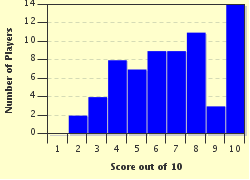Quiz Answer Key and Fun Facts
1. Arguably the most influential newspaper editor of the 20th century, this Kansan gained fame in 1896 with his essay, "What's the Matter with Kansas".
2. H. L. Mencken (1880-1956) was an influential journalist in the first half of the 20th century. He gained widespread notoriety through his cynical and sarcastic coverage of the 1925 trial of John Scopes for teaching evolution. Mencken covered this trial for which newspaper, a paper for which he continued to write until suffering a stroke in 1948?
3. Which wisecracking writer, a founding member of the famous Algonquin Roundtable, when informed that Calvin Coolidge had died, responded, "How could they tell"?
4. One of the longest-running radio shows ever was a news and commentary program on ABC Radio lasting from 1951 until 2009. Who was this conservative Chicago broadcaster with a unique broadcasting style, who enjoyed telling "the rest of the story"?
5. Among the many jobs of this Oklahoma native were his syndicated newspaper column, which ran from 1922 to 1935, and his radio broadcasts, running from 1929 to 1935. Who is this versatile humorist, who supposedly never met a man he didn't like?
6. Three of these magazines got their start in the 20th century. Which is the exception?
7. CNN, the first all-news television channel in the United States, was started in 1980 by which visionary entrepreneur?
8. Before Ernest Hemingway became a famous novelist, he was a reporter for a U.S. newspaper. For which paper did Hemingway write prior to leaving for service as an ambulance driver in World War One?
9. Our next journalistic giant wrote over 7,500 daily columns for Chicago newspapers during his long career, and his columns were syndicated in more than 600 newspapers across the U.S. His biography of longtime Chicago mayor Richard Daley, entitled simply "Boss", spent 26 weeks on the New York Times bestseller list.
10. Who is the longtime New York City newspaper columnist whose books include "Can't Anybody Here Play This Game", and "The Gang That Couldn't Shoot Straight"?
Source: Author
chessart
This quiz was reviewed by FunTrivia editor
bloomsby before going online.
Any errors found in FunTrivia content are routinely corrected through our feedback system.


